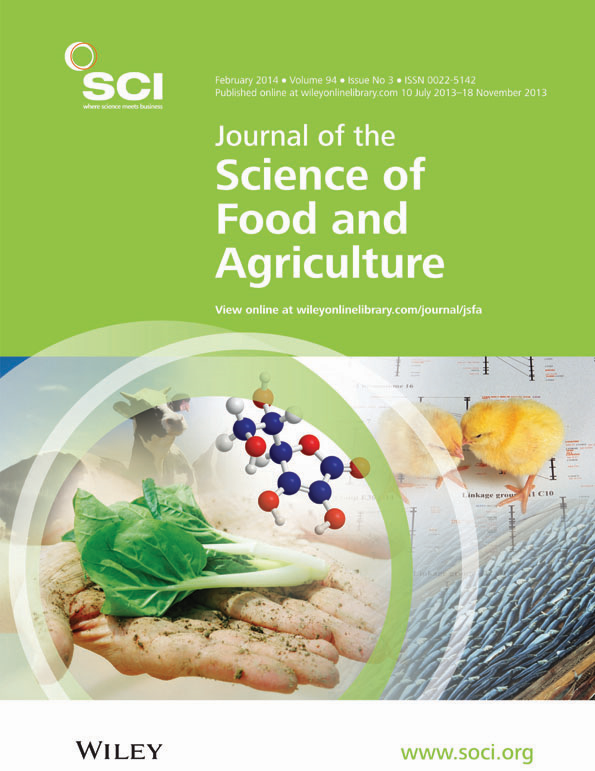Ver ítem
- xmlui.general.dspace_homeCentros Regionales y EEAsCentro Regional Santa FeEEA ReconquistaArtículos científicosxmlui.ArtifactBrowser.ItemViewer.trail
- Inicio
- Centros Regionales y EEAs
- Centro Regional Santa Fe
- EEA Reconquista
- Artículos científicos
- Ver ítem
Effect of genetic background on the stability of sunflower fatty acid composition in different high oleic mutations
Resumen
BACKGROUND: The effect of genetic background on the stability of fatty acid composition in sunflower near isogenic lines (NILs) carrying high-oleic Pervenets (P) or high-oleicNM1mutationswas studied. Thematerialswere field-tested in different locations
and at different sowing dates to evaluate a wide range of environmental conditions. Relationships were established between
the fatty acids and theminimum night temperature (MNT) and the response was
[ver mas...]
BACKGROUND: The effect of genetic background on the stability of fatty acid composition in sunflower near isogenic lines (NILs) carrying high-oleic Pervenets (P) or high-oleicNM1mutationswas studied. Thematerialswere field-tested in different locations
and at different sowing dates to evaluate a wide range of environmental conditions. Relationships were established between
the fatty acids and theminimum night temperature (MNT) and the response was characterized.
RESULTS: A genetic background effect for the fatty acid compositionwas found in both groups of NILs. The NM1-NILs showed an
oleic level higher than 910 g kg−1 and theyweremore stable across environmentswith a zero or lowdependence on the genetic
background; on the other hand, high oleic materials bearing the P mutation showed lower levels of oleic acid, with a higher
variation in fatty acid composition and a highly significant dependence on the genetic background.
CONCLUSION: The NM1 mutation is the best option to develop ultra-high oleic sunflower oil that is stable across environments
and genetic backgrounds,making its agronomical production more efficient and predictable.
[Cerrar]

Autor
Alberio, Constanza;
Aguirrezábal, Luis Adolfo Nazareno;
Izquierdo, Natalia Gabriela;
Reid, Roberto;
Zuil, Sebastian;
Zambelli, Andres Daniel;
Fuente
Journal of the science of food and agriculture 98: 4074–4084. (2018)
Fecha
2018
Editorial
Wiley
ISSN
0022-5142
1097-0010 (Online)
1097-0010 (Online)
Formato
pdf
Tipo de documento
artículo
Palabras Claves
Derechos de acceso
Restringido
 Excepto donde se diga explicitamente, este item se publica bajo la siguiente descripción: Creative Commons Attribution-NonCommercial-ShareAlike 2.5 Unported (CC BY-NC-SA 2.5)
Excepto donde se diga explicitamente, este item se publica bajo la siguiente descripción: Creative Commons Attribution-NonCommercial-ShareAlike 2.5 Unported (CC BY-NC-SA 2.5)

